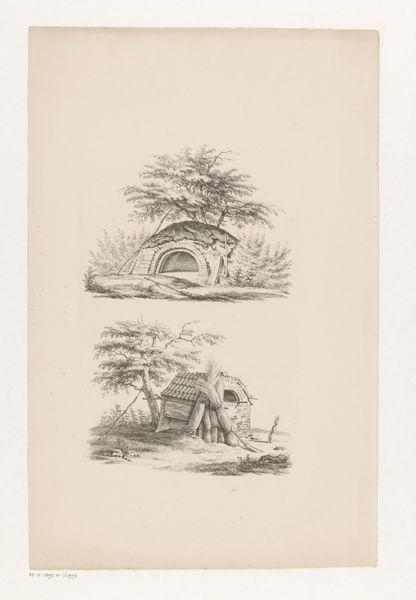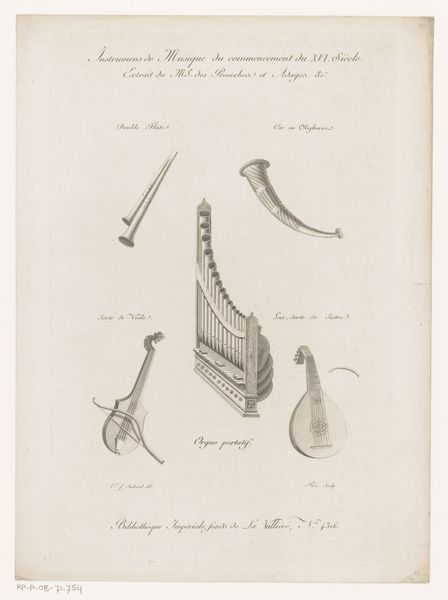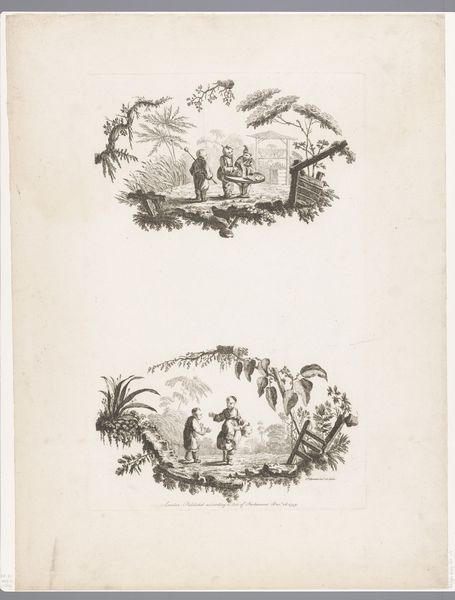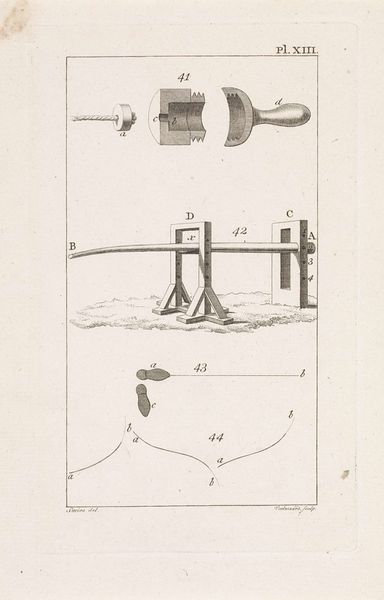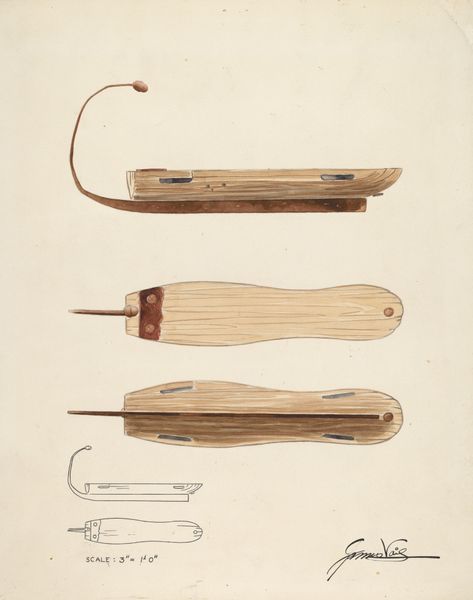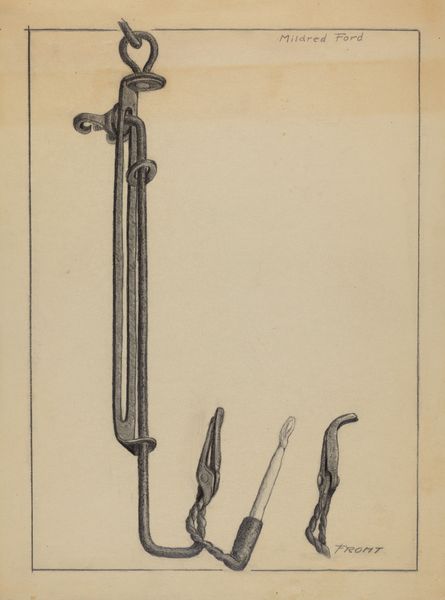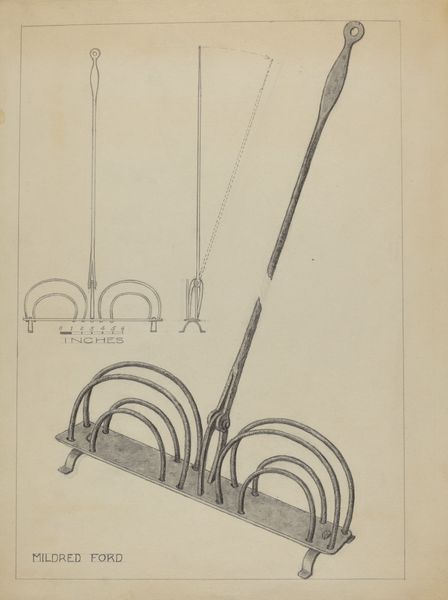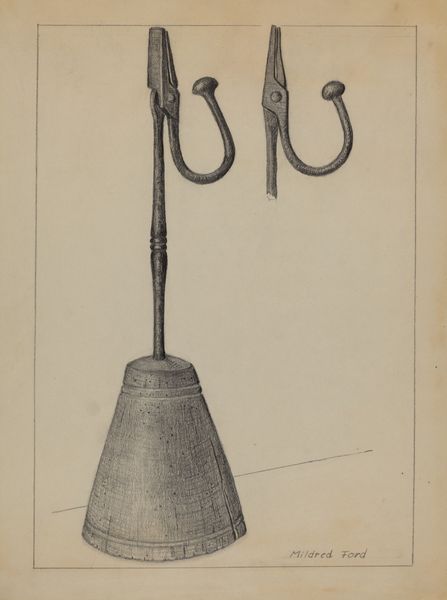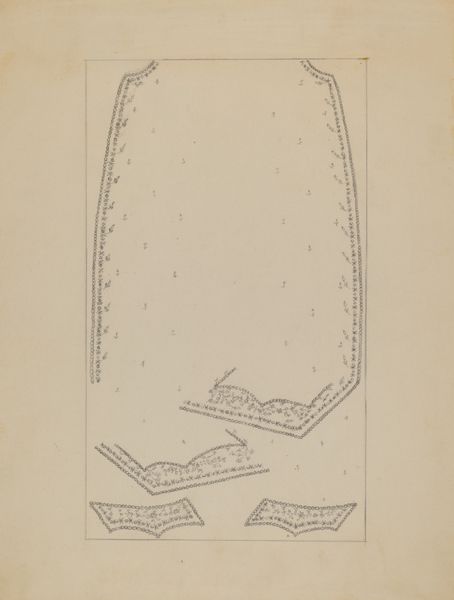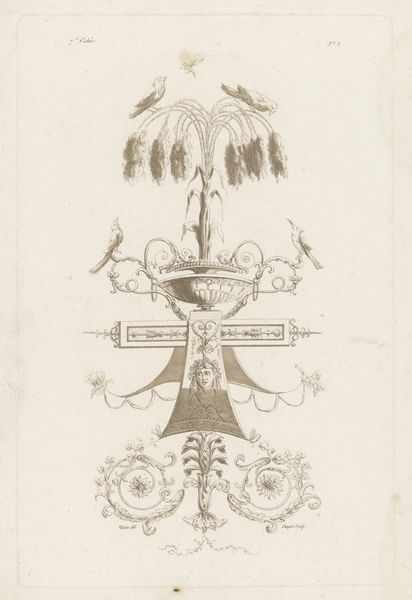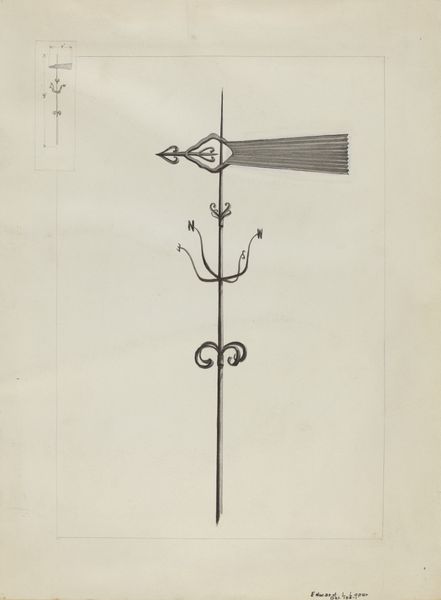
Tavle til: "Vejledning for bonden til at dyrke hør" 1806
0:00
0:00
drawing, graphic-art, print, etching, engraving
#
drawing
#
graphic-art
#
neoclassicism
# print
#
etching
#
landscape
#
etching
#
engraving
Dimensions: 185 mm (height) x 111 mm (width) (plademaal)
Editor: This etching by Gerhard Ludvig Lahde, made in 1806, is titled "Tavle til: “Vejledning for bonden til at dyrke hør" -- quite a mouthful! It depicts different tools and stacks of what I assume is flax. It feels almost like a technical diagram, but something about the meticulousness feels artistic. What catches your eye when you look at this? Curator: Well, given my interest in the means of production, I immediately consider the labor embedded in this image. It isn't just about showing tools; it’s about illustrating the process of flax cultivation, something deeply rooted in the material realities of 19th-century agricultural life. Consider the act of etching itself. The artist painstakingly transfers knowledge – almost manufacturing information for dissemination. Editor: So, it's not just a drawing, but a way of sharing practical skills through art? Curator: Exactly! How does the choice of etching and engraving – techniques enabling reproduction – contribute to a Materialist reading? We should question the role of mass production and access to this kind of knowledge. Was it aimed at improving yields or creating a certain social order through expertise? Did it seek to ennoble labour? Editor: I see what you mean. Thinking about the social context, this was probably distributed to landowners or farmers to improve their flax production... Almost like propaganda to improve flax production, which at that time would have been important to the economy. Curator: Precisely. And even the style – Neoclassicism – lends itself to that ordered dissemination of information. What I’ve learned is it encourages me to think more broadly about labor's role and representation. Editor: I hadn’t considered it that way! Now, when I see the picture, I won't see it just as a flax "instruction manual". It’s a window into the relationship between art, labor, and social structures of the time.
Comments
No comments
Be the first to comment and join the conversation on the ultimate creative platform.

